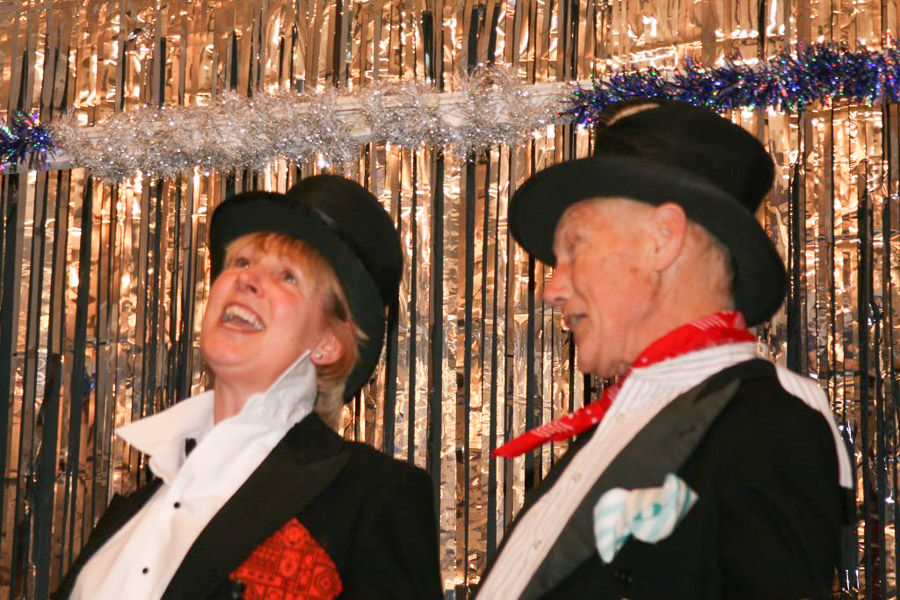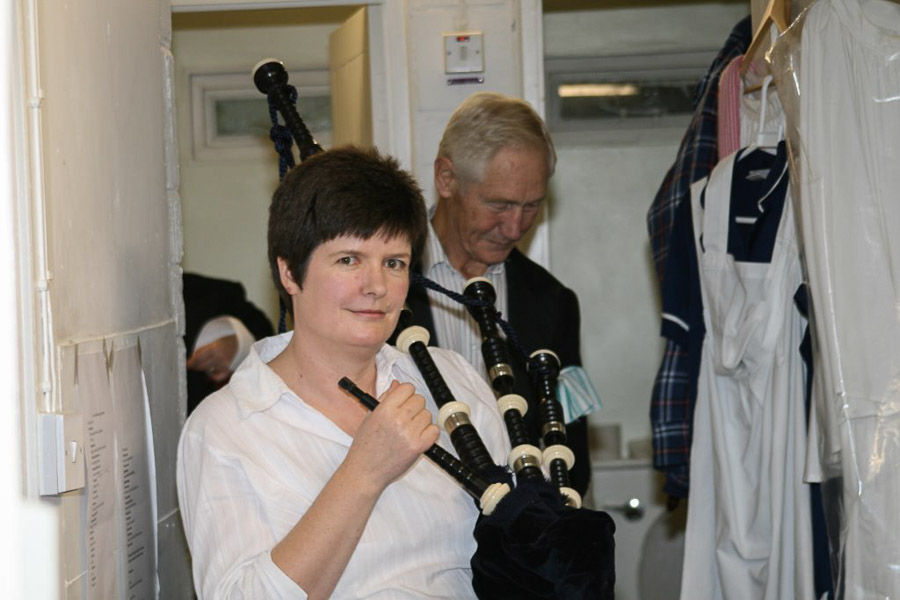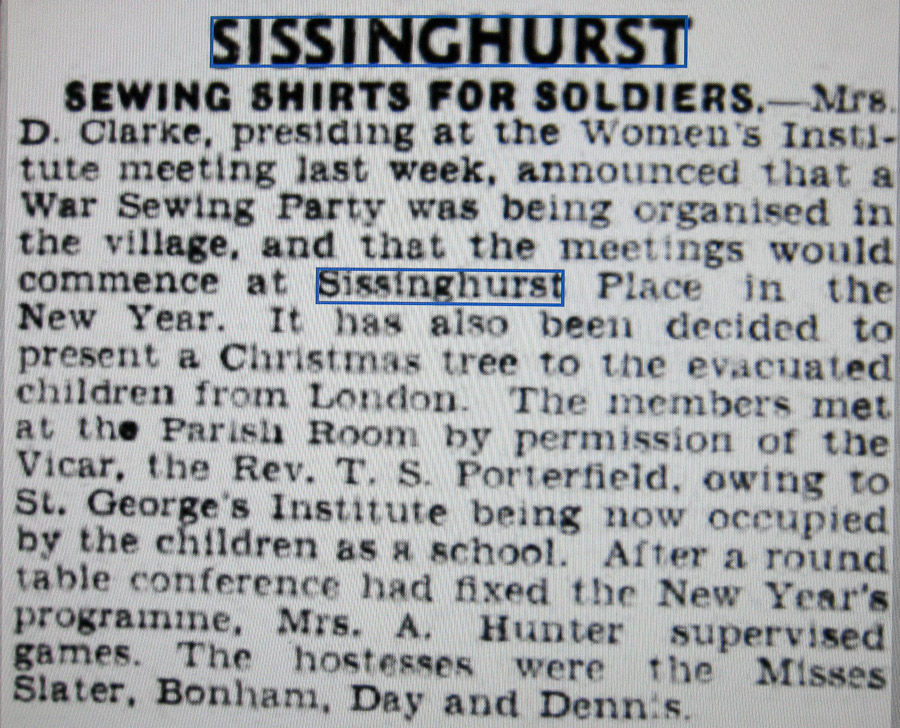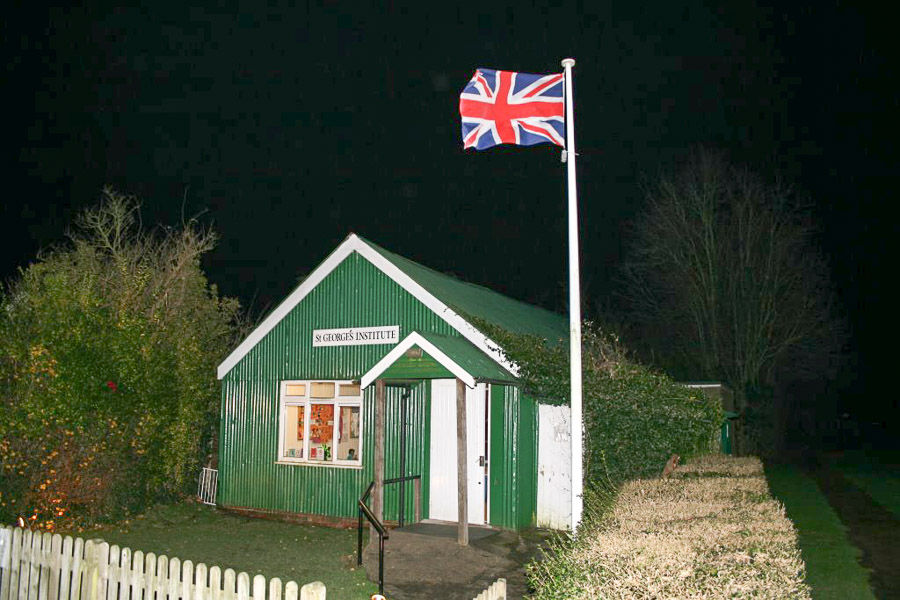
History
St George's Institute
One Hundred Years of Service
A brief history
In September 1914 the piece of land on which the original village hall, the St George’s Institute, stood was purchased for the sum of £45 by Captain Robert Alexander, Arthur Cooper, Cecil Tomkins and Edward Butler all residents of Sissinghurst who then gave it to the village. It was nearer the main road than the new Village Hall.
It is not entirely clear where the original building came from, but is thought to have been donated by the Alexander family of Great Swifts who at the time used the ‘hut’ as a family overflow of museum items, including a stuffed bird collection now in the Cranbrook Museum.
After the First World War the Hall became a Returned Serviceman’s Club and a meeting point for the Air Raid Patrol. During the Second World War Red Cross volunteers used the Hall as a base and it also became a billet for troops prior to the D-Day landings.
Records show that on the day the Second World War broke out, local ladies Mary and Patsy Saville and Mary Beale all based themselves at the Hall in readiness to receive any injured servicemen.
The original hall had been used for a host of village meetings and clubs, including a working man’s club, over the years. It was also home to the WI for some time in the 1930s and acted as a base for the Sissinghurst Rat Catchers’ Club which met every week to record ‘success’. This hall had been a centre for many community activities, on a regular basis today as for over one hundred years.
A Little More Detail
Over 100 years ago, on 10th September 1914 the village became the proud owners of a village hall. It became known as St George’s Institute.
The piece of land which consisted of St George’s Institute and Oliver’s Cottages was sold on 11th October 1887 by Fiennes Stanley Wykeham Cornwallis to Julia Oliver (Did Julia Oliver have Oliver’s Cottages built or were they already there and she renamed them after herself?).
The same land was sold on 24th June 1909 from William Austen Oliver and Charles Marten to P T Wharton of the Granary, Wickford, Essex, Gentleman
On 10th September 1914 that part of the land adjacent to the Playing Field was sold by P T Wharton to Captain Robert Alexander of “Swifts“ Cranbrook (Captain in His Majesty’s Army and others) and others:
-
Arthur Piper of “Steelden” Sissinghurst, Solicitor
-
Cecil Tomkins, Clerk in Holy Orders
-
Frances Philpott, School Attendance Officer
-
Edward William Butler, Labourer
The land was bought for £45 which was raised by public subscription for the purpose of “purchasing the site and erecting a Hall to be known as St George’s Institute for the benefit and use of the inhabitants for the time being of the parish of Sissinghurst”.
The land was “all that parcel of land having frontage of 35’, depth of 118’ on East and West and width of 30’ on South”.The land on the South side was owned by Mr W Larkin, later by Mr Milton BurgessThe land on the East side was then owned by Mrs Binley (what we now know as Bridglands)On the West side was already the Jubilee Field, for recreation.
There are varying accounts of where the building came from. Was it originally between The Grange (Sissinghurst Place) and Plummers Farm and used as a school? Some people think so but others say that was a different building made of brick which was taken down and rebuilt as the Parish Room. Or was the hall a place used to store souvenirs and artefacts collected by the Alexander family from their travels in Africa and elsewhere – a kind of museum at Swifts – and then put in a corner of the Cricket Field when they no longer required it? Maybe someone knows for sure.
Anyway the building existing until 2023 was erected on the site around 1914/5 and during the First World War soldiers marched through The Street and were billeted in the Hall.
Interest in and use of St George’s Institute, which seems to have been used mainly as a Men’s Club, appeared to decline in the 1920s and a Parish magazine of 1929 records lantern lectures, Mothers’ Union meetings and the Kent Education Committee’s Library all taking place in the Parish Room, but no mention of the Hall. At least two of the Committee had died – Mr Edward William Butler on 21st January 1923 and Captain Robert Alexander on 22 June 1928.
On 2nd April 1930, George Charles Hughes (Solicitor) and the then President of St George’s and William Gore Bridgland, Herbert Edward Delbridge, Howard Gosden, Thomas John Luck, Leslie George Hayesmore, Robert Hayley Pantry, Milton Burgess, Francis Philpott and Horace Henry Punnett, members of the Committee made an agreement with Katharine Drummond of The Grange, Minnie Hassall Hughes (who is commemorated in one of the stained glass windows in Trinity Church) and Nora Sharpe, who were Presidents and Vice-Presidents of the Sissinghurst WI, and the WI Committee who were (many of these names are still known in the village, and like those above, many were local tradespeople):
-
Elizabeth Bond (Church House)
-
Ethel Hattersley-Smith
-
Edith Burgess
-
Annie Crampton
-
Aldena Alice Dennis
-
Florence Barnard
-
Emily Evenden
-
Alice Harris
-
Frances Hood
-
Marjorie Hunter
-
May Drowly
-
Margaret Tomkins
-
Florence Bridgland
-
and Lizzie Morgan
To allow them to have St George’s Institute for 3 years from 1 January 1930 rent free. The WI could make alterations and improvements including lavatory accommodation (“if they would find that convenient”) and installing a water supply. The Landlords would pay outgoings and fire insurance so long as they got the Cramp’s Bequest which was for £4..2..2 a year. If the outgoings were more than this, then the WI would pay the excess.
SGI could be used by others after 6pm for one shilling per evening plus one shilling for heating and lighting. Once the three years were up, a yearly follow-on tenancy could be considered.
The Agreement was witnessed by Mr Morgan the Village Schoolmaster.Legend has it that the WI ’took over’ the Hall during the war and would not let the men have it back when they returned from fighting.
Legend has it that the WI ’took over’ the Hall during the war and would not let the men have it back when they returned from fighting
Gallery



























